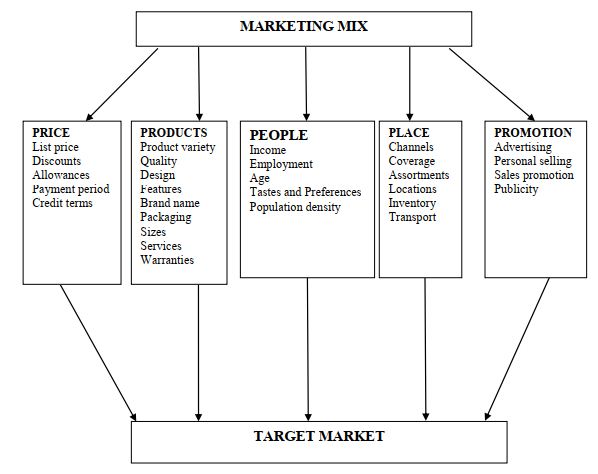The marketing mix framework was particularly useful in the early days of the marketing concept when physical products represented a larger portion of the economy. Today, with marketing more integrated into organisations and with a wider variety of products and markets, some authors have attempted to extend its usefulness by proposing other P, such as people, process and physical evidence.
People
This refers to the consumers for whom the goods and services are intended. There are various considerations made about the consumers in determining the suitability of the market mix to be used. (Figure. 12.1)
An effective marketing program puts together all the marketing mix elements.
Figure 12.1 showing the marketing mix elements
The other extended components of marketing mix include the following:
PROCESS
Refers to the systems used to assist the organisation in delivering the service. Imagine you walk into Burger King and you order a Whopper Meal and you get it delivered within 2 minutes. What was the process that allowed you to obtain an efficient service delivery? Banks that send out Credit Cards automatically when their customers old one has expired again require an efficient process to identify expiry dates and renewal. An efficient service that replaces old credit cards will foster consumer loyalty and confidence in the company.
PHYSICAL EVIDENCE
Where is the service being delivered? Physical Evidence is the element of the service mix which allows the consumer again to make judgments on the organisation. If you walk into a restaurant your expectations are of a clean, friendly environment. On an aircraft if you travel first class you expect enough room to be able to lay down!
Physical evidence is an essential ingredient of the service mix, consumers will make perceptions based on their sight of the service provision which will have an impact on the organisations perceptual plan of the service.

